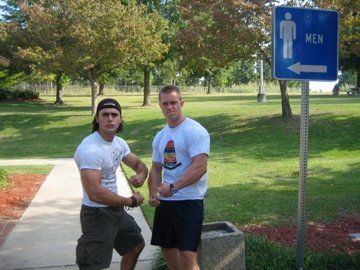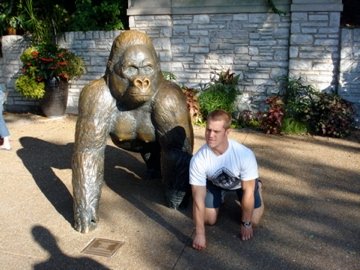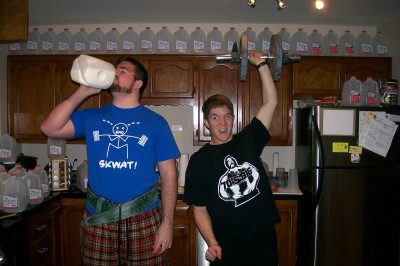“Ah, a boy. I don’t work with the males, because I used to be one.”
Everybody has a point in which they started lifting weights or training (keep in mind that lifting weights does not necessarily mean that you are training). Back when I was a wee lad, I had the inspiration of wanting to have larger muscles after watching wrestling on TV. I look back now and consider it a bit weird that my mom was okay with my brother and I watching a show where men ran around oiled up in their underwear hugging each other — but hey, I turned out all right.
In any case, that was my original inspiration — to be big like the guys on TV. I started messing around with a dumbbell in 6th or 7th grade, mainly doing copious amounts of curls. I had stopped playing baseball at around ten years old and primarily played basketball…badly. I was pretty good at boxing people out, and that is about it. In eighth grade I was more or less recruited to play football, and we would go lift at the high school a few times a week, and this is where I knew I belonged. In my years of high school I loved getting stronger, and I always did. Every time we would max out I would put at least 30 or 40 pounds on my squat (high bar) and increase my favorite lift, the power clean– it was a glorious feeling.
And this is how I got into learning how to lift and learning how to teach people to lift. By the time I was a junior, I was teaching my teammates and continued to help out others in the weight room. I would go on to play a year of football at a very, very small college, and then after I quit that I had a few years of feeling lost in the gym. For a while I worked out in the same way I did in high school, then it shifted into more of a bodybuilding approach (with squatting — I never stopped squatting). After getting very bored and very annoyed with this, I messed around with CrossFit for half a year and got good at that…meaning I was just faster than other people at exercising.
I bought Rip’s books and combed through them multiple times and immediately started implementing it and teaching it to friends (I was a personal trainer, and then co-owned a small CrossFit). Then, in January of 2009, I ended up here in Wichita Falls and started training more seriously. I went through a linear progression, got into intermediate programming, and then took a likening to the Olympic lifts.
Blah, blah, blah, that is how I got into training properly and effectively. Other than intramurals I didn’t have any competitive events in my life, and none that my training revolved around. It is better this way for reasons that we have previously discussed. Whether you are old or young, new or experienced, why don’t you share how you got into training?

This is a picture of AC and I about two years ago. He is probably 180 and I am 195...

Here is another picture of me before I started seriously training.

